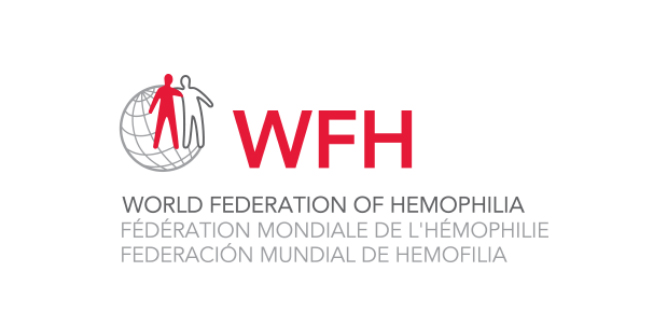
Specific Risks of COVID-19 to the Bleeding Disorders Community
The World Federation of Hemophilia (WFH) is holding online webinars and sharing information from around the world, including information and data from other countries specific to people with bleeding disorders regarding Covid-19 and its impact on our community. GLHF will be notifying you about these video webinars, as well as posting articles and information from the WFH on our website. All information from the WFH will have the “World Federation of Hemophilia” graphic.
WFH COVID-19 Task Force: Assad Haffar, Cedric Hermans, Barbara Konkle, Brian O’Mahony, David Page, Flora Peyvandi, Steve Pipe, Mark Skinner and Radek Kaczmarek and Glenn Pierce, Co-chairs
Risks of acquiring SARS-CoV-2 (the virus) and COVID-19 (the disease)
- No increased susceptibility to infection has been found in immunocompetent patients with bleeding disorders. SARS-CoV-2 is passed primarily through droplets in the air coming from infected persons. These droplets get into the upper respiratory tract where they establish an infection.
- There is no information about whether persons with HIV are at increased risk of acquiring the infection. However, if infected, immunocompromised people are at much higher risk for severe disease. For HIV, that includes:
- People with a low CD4 T-cell count (e.g., <200)
- People not on antiretroviral HIV treatment
- If there are other underlying diseases associated with severe COVID-19
- https://www.cdc.gov/coronavirus/2019-ncov/need-extra-precautions/hiv.html
Risks if you have COVID-19 infection and a bleeding disorder
- This is a potentially deadly infection that causes a spectrum of disease, from asymptomatic to severe pneumonia and lethal systemic sequelae. While older individuals and those with identified risk factors are at greater risk of serious and lethal disease, children and young adults may also develop severe disease, although less frequently.
- Risk factors include other systemic diseases including hypertension, diabetes, cardiovascular disease, and immunosuppression.
- Individuals with hypertension should not discontinue their medication. Current evidence does not support changes in the management of hypertension.
- As COVID-19 progresses, coagulation pathways are activated as part of the host inflammatory response to limit the viral infection. Specifically, D-dimers, products of fibrin as it is degraded within clots, are elevated in many cases of hospitalized COVID-19 patients. D-dimers are an indicator of clot (thrombus) formation and breakdown.
- More severe COVID-19 disease may lead to overt disseminated intravascular coagulation (DIC), associated with high mortality. DIC is a coagulopathy that may arise from the systemic inflammatory response to the virus and damaged tissue caused by the infection. In DIC, decreased platelets, prolonged screening tests (PT and aPTT), and decreased fibrinogen are
- Close monitoring for bleeding and thrombosis is recommended for all individuals who progress with signs or symptoms of DIC.
- Anticoagulants (e.g., low molecular weight heparin, LMWH) are being recommended as part of treatment protocols for patients with elevated D-dimers and severe infection. Use of anticoagulants should be accompanied by factor replacement therapy.
- Should a thrombotic event occur in a hemophilia patient, detailed reporting is important (including COVID-status, laboratory assessments, imaging, replacement therapy).
- If COVID-19 is diagnosed, prophylaxis with factor replacement therapy should be continued, and if hospitalized for severe infection, higher trough levels may need to be considered as if treating major trauma.
- The risk of thrombotic complications for hemophilia patients who are currently treated with non-factor replacement therapies including emicizumab or other investigational agents (e.g. fitusiran, anti-TFPI) is unknown in the presence of COVID-19 infection.
- In individuals with hemophilia A receiving emicizumab, it is unknown how the drug may interact with coagulopathy caused by infection and close monitoring for thrombosis is recommended.
- Prophylaxis should be continued, and in the event of missed doses, the long half-life (~30 days) of emicizumab should be taken into consideration, since it will be present and active for a prolonged period of time.
- Patients should be assessed to determine if they need additional clotting factor replacement therapy.
- Anticoagulants may be considered as per recommended treatment protocols.
- In patients with FVIII inhibitors receiving emicizumab, extra precautions should be taken if a patient requires aPCC due to the known drug-drug interaction between emicizumab and aPCC.
- Be aware that some one-stage coagulation assays, such as aPTT which is often used to diagnose and monitor patients in DIC, overestimate coagulation in patients on emicizumab and thus may mask coagulopathy.
- Investigators are advised to seek guidance from the study sponsors and medical monitors for subjects within clinical trial programs for these agents. Patients should inform health care providers they are on a clinical study and reference back to their hematologist is recommended.
- For patients participating in a clinical trial of gene therapy, in addition to caution regarding infection risk when immunosuppressed, as outlined in Practical Recommendations for People with Hemophilia https://news.wfh.org/covid-19-coronavirus-disease-2019-pandemic-caused-by-sars-cov-2-practical-recommendations-for-hemophilia-patients/, supplementation to higher coagulation factor levels (e.g. as if treating major trauma) could be considered in those who have had a suboptimal response to the gene therapy.
- Patients with bleeding disorders of all severities and COVID-19 should be eligible for all available therapies that would be required depending on their condition (e.g., ventilation support, ECMO, hemofiltration).
- Having hemophilia should not exclude individuals from invasive management of COVID-19.